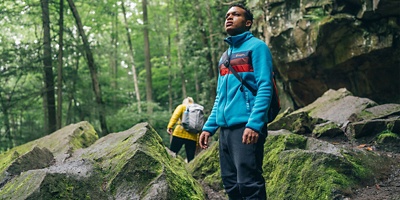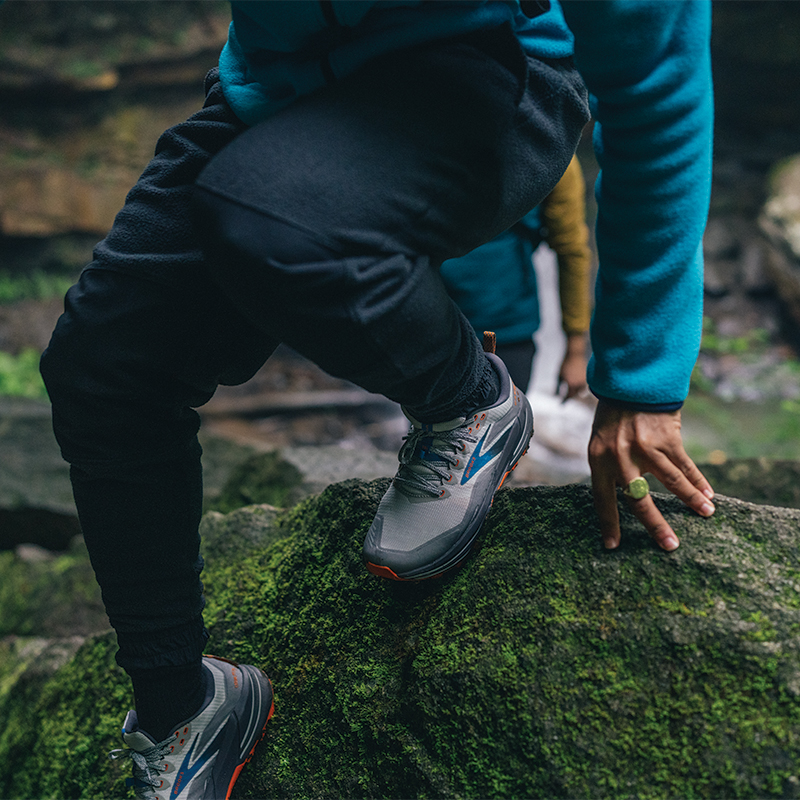For as much as we’d love to just rock our birthday suits every time we hit the trails (communing with nature, right?), hiking pants provide practical protection from the elements. With the right pants you can take on any hike: Fend off the sun’s rays on summer afternoons, keep pesky mosquitos at bay, wick away moisture during a grueling ascent, or prevent grasses, twigs, and branches from scraping your bare legs. Here’s how to buy the best pair of hiking pants for your next adventure.
Basic Terminology
Though pants come in various shapes and sizes, the words to describe them are largely the same across brands.
Waistband: what wraps around your waist and secures the pants to your body.
Fly: the zipper before your crotch.
Inseam: the length from your crotch down to your ankle.
Hem: the bottom of the pant legs.
Tapered pants: narrow toward the ankle.
Flared pants: widen toward the ankle.
Convertible pants: have zippers or snaps around your thighs or calves that can transform the garment into shorts or capris, or back into pants.
Bermuda shorts: longer shorts that fall around the knee.
Capris: shorter pants that fall above the ankle, but below the knee, often tapered.
Elements To Consider
Namely, where you’ll be hiking and how you like your pants to feel when you’re making miles.
Location, location, location: First, identify the type of pants that’ll serve you best with a good understanding of where you’ll be hiking. This informs the type of materials and features you want to prioritize. Look up the regional climate for your destinations.
Hot and arid: Try pants that can ventilate well, (breathable or able to be rolled-up or converted into shorts) and provide UV protection from the sun.
Hot and humid: Look for moisture-wicking pants that’ll help mitigate sweat; consider insect repellency in the event of buggy terrain; and keep an anti-chafing fit in mind when contemplating size and fit.
Cold and wet or windy: Prioritize the weight of your pants (how thick they are) and their resistance to weather and moisture.
All over the place: Pants with convertible or zip-off legs, along with adjustable waists, provide a way to test out different fits or styles of hiking pants.
Fit: With everything from baggy cargo pants and tapered zip-offs to hardy leggings equipped with pockets, ultimately your choice comes down to one factor: What you feel most comfortable and capable in. Getting to know your favorite fit might take some trail time to hone, so start with a looser fit to ensure mobility and function first.
Sizing: From brand to brand, sizing is anything but standardized—a size “30” might fit you perfectly in one style of pants, but not in another from another brand. Get rid of the idea that you’re a predetermined size and take your own body measurements (as defined above). Reference your measurements against a brand’s sizing chart to figure your ideal size. Pro tip: If you don’t have a flexible tape measure to assist with these measurements, use a piece of string or rope to mark your distances, then lay the string against a ruler or measuring stick.
What body parts to measure for hiking pants:
Waist = the smallest part of your torso.
Hips = the widest part of your hips.
Thighs = just below your crotch, around your leg.
Knee = around your knee with your knee slightly flexed.
Calf = the widest part below your knee.
Inseam = distance from your crotch to your desired pant length (knee, calf, ankle, etc).
Crotch length = Standing, from the front of your waistline (near belly button), under your crotch, to the back of your waistline (near the small of your back).
Crotch depth = Seated, from the top of your hip to the chair.






